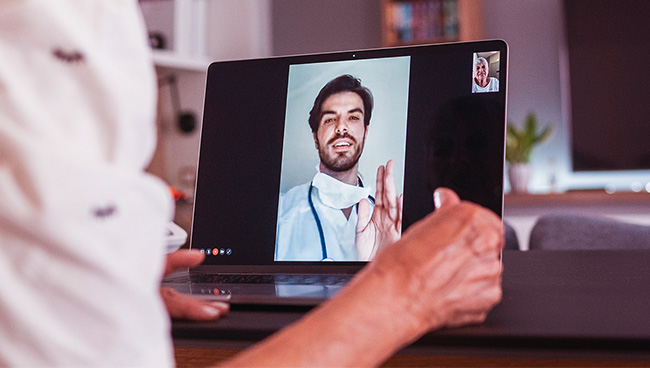Following the path to share in The Big Business of WELL, retail chains are making space for healthcare clinics, but their rollout plans are too long, and also need to account for the new dimension in healthcare: telehealth conferencing.
Retailer Health Centers are Moving at an Anemic Rate
CVS and Target launched the MinuteClinic, and Walmart and Walgreens followed with similar concepts, but these retailers have lost ground to urgent-care clinics operated by national chains and in local medical centers. Further, as these retailers prepare to (slowly) roll out more full-service health centers, shoppers are embracing a new option, telehealth, which will change how health is delivered – and require less space.
And just like with over-storing, they’ll be looking at an “over-clinicing” that is allocating too much space for a service that’s more virtual.
Telehealth Use Has More Than Tripled
Shoppers surveyed for our “Reset The Big Business of WELL” report surprised us by how quickly they are adapting to telehealth services during the pandemic.
- More than 37% of shoppers now use telehealth services for mental, physical and/or pharmacy needs, up from 11% before the pandemic.
- 60% of those shoppers want to continue using telehealth in the right circumstances, because they’ve found it is easier than a trip to the doctor.
- While we expected Millennials to be the heaviest users of remote health services, 25% of Boomers sought online doctor consultations, too. However, just 10% of Boomers (vs. 60% of the total) prefer a telehealth visit to in-person visits.
If all shoppers, including a fair percentage of Boomers, have grown comfortable using telehealth, it begs a crucial question: Why would they go back? They had a good experience. They trust the care. They respect the companies providing the care. And, it’s more convenient than going to a doctor.
But There’s Hope for Brick Health Centers Yet
Retailers investing in store health centers still have a fighting chance – if they get it right and do it fast. One-quarter of shoppers – mostly Millennials and Gen Z – used brick retail health clinics before the pandemic, and 12% used them for the first time since the health crisis. Walgreens, CVS and Walmart led the pack in visits.
The challenge for brick retailers is that shopper/patients have more trust in the care they get from urgent-care clinics, and a higher respect for the companies that own them. Retailers can change those sentiments with the right professional services and alliances.
It’s show time, retailers.
Retailers Need to Sharpen Their Wellness Center Plans
When looking at our survey results, it’s clear brick retail clinics are most vulnerable when it comes to earning and maintaining shopper trust, respect and the experience.
Here are a few ways retailers can shore up on those perceived weaknesses:
Put their trusted brands in the clinics. Retail clinics should take advantage of their most powerful point of differentiation from traditional health centers and carry the wellness brands people most believe in. And they should display these goods where they are easy to grab on the way in or out. The reputation of these brands will reinforce the status of the retailers as care providers.
Show care now. Retailers also can stand apart by how they show they care holistically, which can be aided by their shopper data and service training. For guidance, they can look to specialty beauty retailers and their emphasis on self-care, service and friendliness, all of which are earning chains including Bath & Body Works and Ulta high scores for supporting health, value and experience.
Move. Faster. Planning hundreds of in-store and free-standing health clinics over a couple years sounds ambitious, but the shopper appetite for convenient healthcare is already outpacing that timeline. By the point many of these clinics open, their offerings or formats will be outdated. All of today’s blueprints should incorporate anticipated technologies, or be designed for a quick retrofitting.
Even with a small percentage of shoppers using them overall, telehealth and easy-access clinics are the new answer to convenient health care. The demand will likely continue to shift. Just draw the parallel to technology and shopping. The same is happening in health care.
You can learn more about shopper sentiments to retail-provided health care in our “Reset The Big Business of WELL” report, here.


